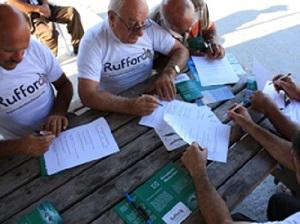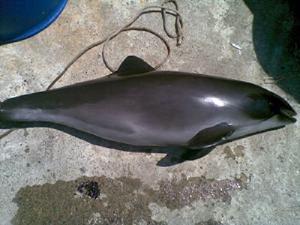Reyhan Sonmez
Principal aims of the project are to determine potential population structure according to their genetic diversity and to identify key habitats exposed to pressure of fisheries activities.

Meeting.
Harbour porpoises are classified as ‘Vulnerable’ on a global scale while Black Sea population currently qualify as ‘Endangered’. By-catch in commercial fisheries is currently considered the primary global threat to the harbour porpoise. The other significant threats upon the species are pollution, vessel traffic and tourism, food depletion. Population reduction due to incidental catch (by-catch) has been an increasingly more serious problem at the Black Sea Coasts of Turkey where there is an intense pressure in turbot fisheries. Every year hundreds of cetaceans assumed to have died because of these bottom-set gill nets.

Bycatch - Black Sea Harbour porpoise.
Study will present genetic biodiversity, which is a fundamental aspect of understanding biodiversity. The presence of genetic variation within species is essential for their potential to survive and for successful evolving in response to both short-term and long-term environmental changes. Therefore, information on the genetic population structure of the species is crucial for effective management and conservation.
During project activities, tissue samples will be collected for genetic analysis, and fisheries-porpoise interaction data will be gathered. Obtained data will put forward the population structure of Black Sea. The project will also investigate interaction between fisheries and harbour porpoises to produce key habitats.
Communication with the target group such as fishermen, security guard command, NGOs, universities’ biology and fisheries departments and the beneficiaries of the coasts is also a part of our public awareness strategy. In the near future, a potential ‘marine mammal information and rescue network’ will enable all target group members to be strong partners of this network. The network will be complementary to “Mediterranean monk seal information and rescue network” in Turkey.